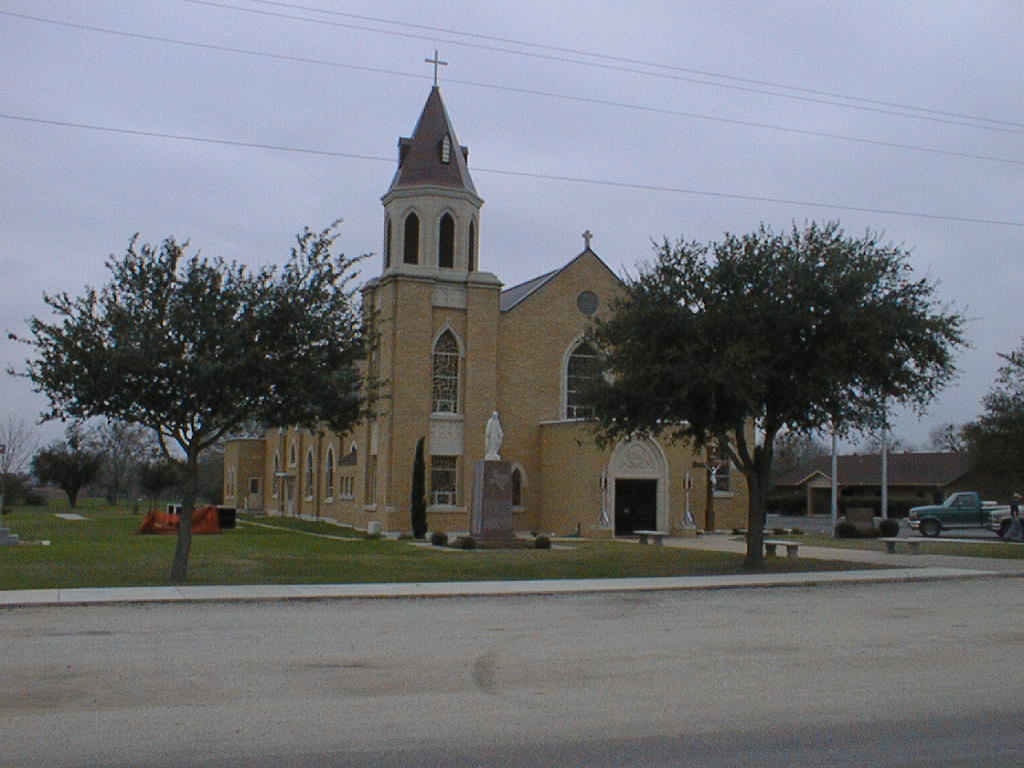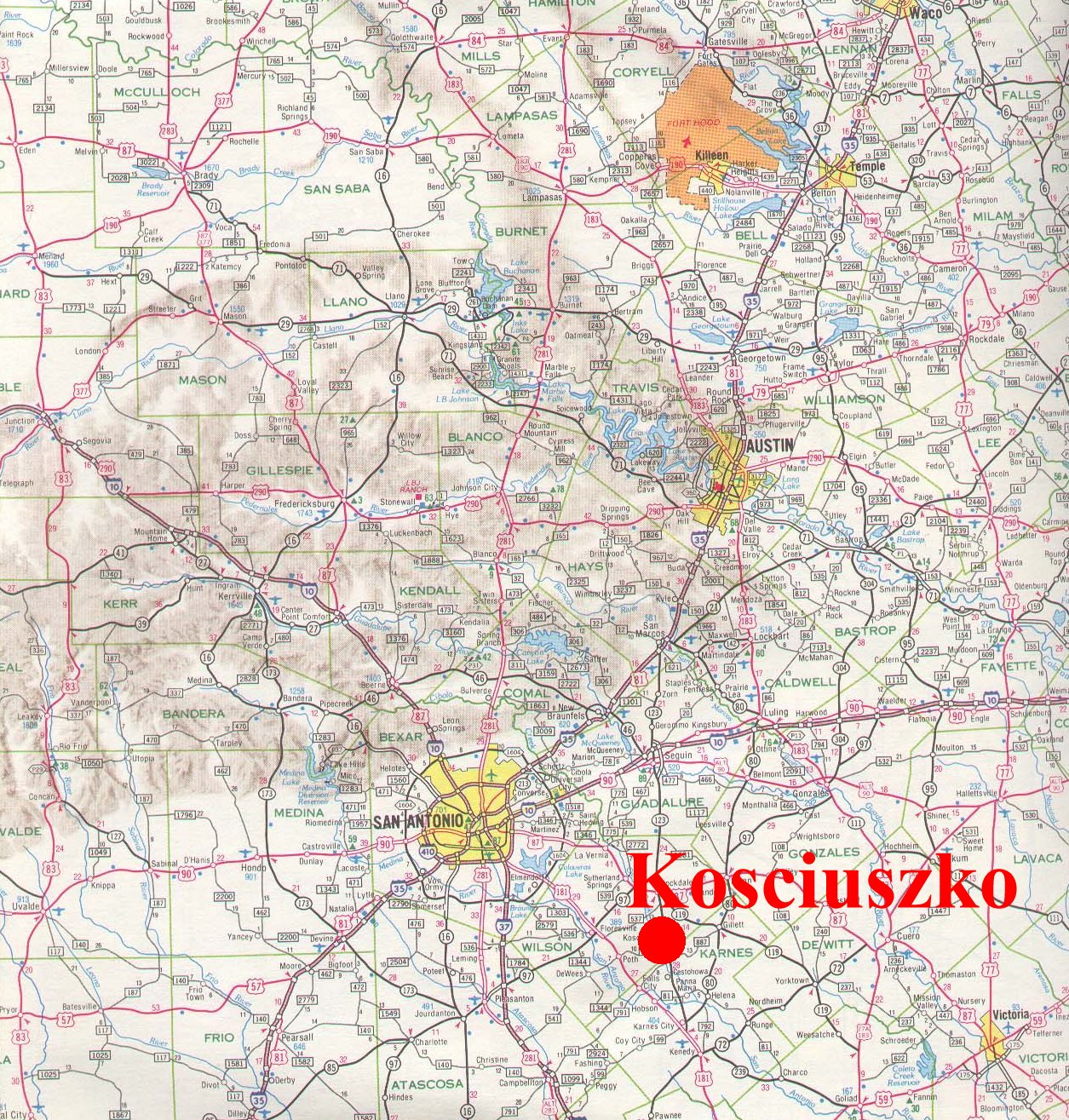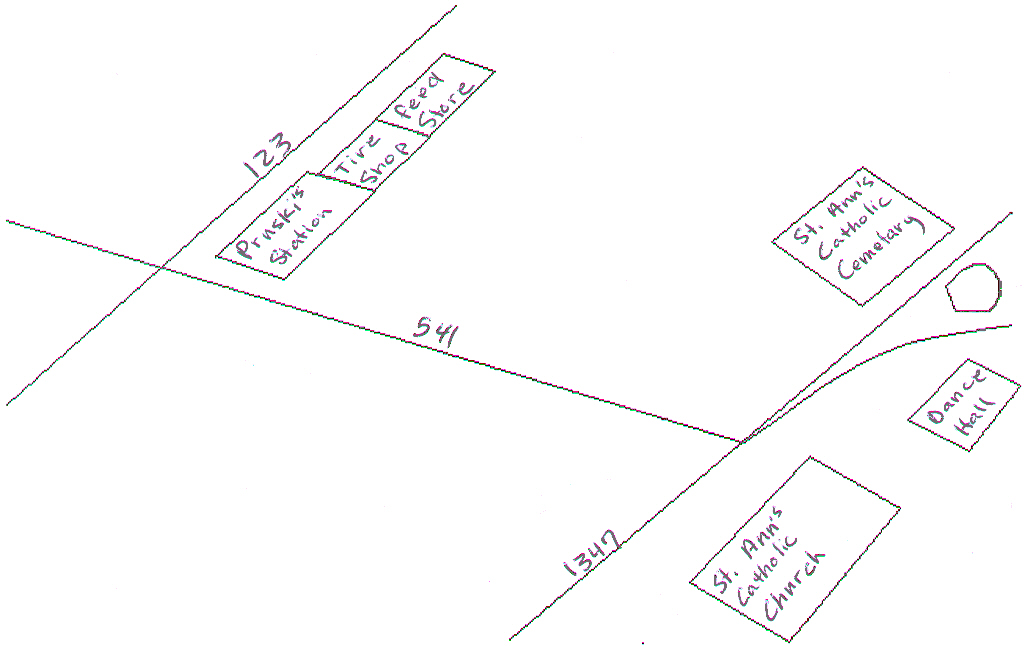

| Thomas Fryer, Shane Kuhlman | Spring 2001 |
| History 1302 | Hines |
ECONOMY: Kosciusko is an agricultural town that consists of mainly small farms and ranches. The General Store is a major source of supplies and services. It consist of large fertilizer trucks for the large fields in Kosciusko and the surrounding area. Also for the farmers and ranchers the General Store sells grain and feed. For everybody else the store provides gas and tire service. To a few it provides them with jobs.
LANDMARKS:
The most significant land mark the town is the St. Ann's Catholic Church. A recent edition of its local newspaper, the Wilson County News, has as its main item a report headed "The Bells Toll for Kosciuszko," describing the dedication and unveiling of "a much-awaited historical marker" at St. Ann's Catholic Church, on the 254th anniversary of the General's birth earlier that month.
EVENTS:
Major events in the town consist of mainly dances, church functions, and baseball games. The events that really put Kosciusko on the map are the dances that have been held there since the 1930's and continue to this day. The dance hall started out in the early thirties as a hall for the church socials. As the years went on, the hall became strictly used for dancing. If it were not for the dance hall, the town would not be as well known as it is. The church functions are usually very large barbecues filled with families and group events. Baseball is one of the town's major competition for the adults.
INTERVIEWS:
* Was the post office the business in the town? "Yes, it was built back in 1896 before anything else"
* Was the store originally yours? "No, my brother and I bought it from our uncle in 1964. After we bought it from him we changed it from gas station and restaurant to Gas Station, Bar, Feed Store, Fertilizer,and Tire Shop."
*When did you move here? "I didn't move here, I have lived here all of my life."
*How long has the Dance Hall been here? "The Dance Hall was built in the early 30's and was used for the weekend dances and church socials."
*Was there ever a school here? "Yes in the 40's there was about 400 people in this town and it made for a nice little
school. It use to be between the church and the community center."

WEBSITES:
ANNOTATED BIBLIOGRAPHY: BIBLIOGRAPHY

